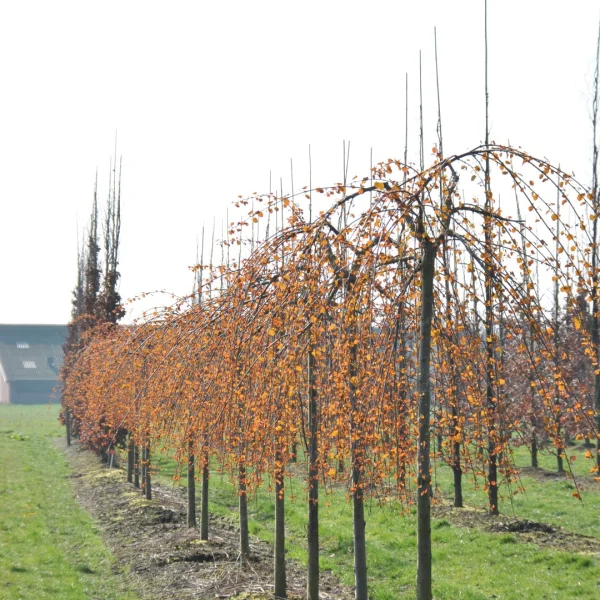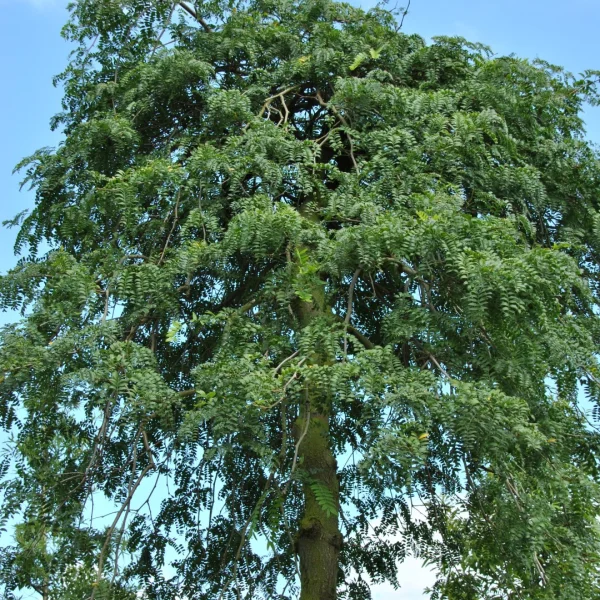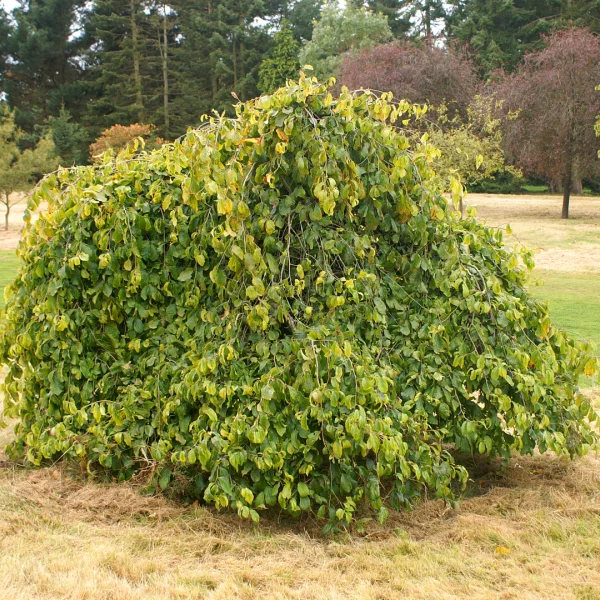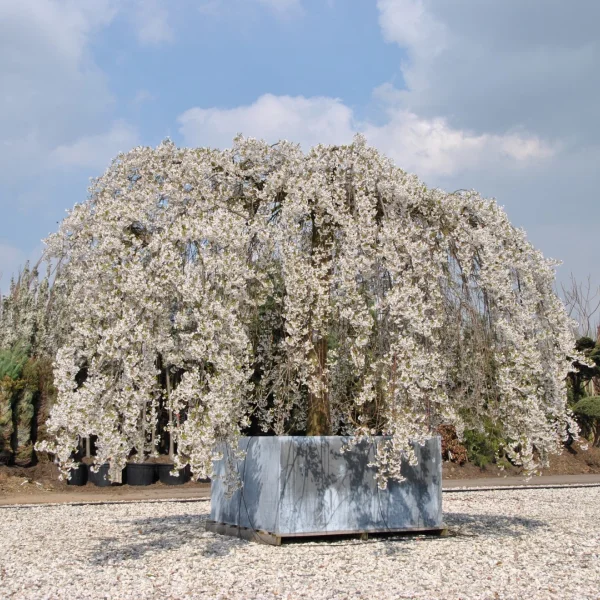Ulmus 'Camperdownii' – Camperdown elm
Ulmaceae
Ulmus 'Camperdownii' – Camperdown elm
Copac frumos plângător cu ramuri robuste și căzătoare care ating adesea pământul. Formează o coroană închisă. Este altoit pe U. glabra, de obicei la o înălțime cuprinsă între 2 și 2,5 m. Trunchiul la arborii tineri este neted și gri-argintiu, mai târziu devine gri-închis cu caneluri negre, iar trunchiurile bătrâne sunt canelate în formă de plasă. Crengile tinere sunt brune, ușor păroase și cu lenticule, mai târziu devin goale și gri-maronii. Frunzele robuste sunt apropiate, creând o vegetație densă, iar frunzele acoperă întreaga ramură. Pe ambele fețe, frunzele sunt păroase și dințate grosier, partea superioară fiind aspră la atingere. Pe o parte, pețiolul este acoperit de baza frunzei strâmbă, caracteristică frunzelor de ulm. Mugurii florali foarte groși se deschid chiar înainte de înmugurirea frunzelor. Susceptibil la boala olandeză a ulmului.
Availability
Specifications
Download PDF
Height
6 - 10 m
Width
6-8m
Crown
broad weeping, dark, dense crown
Bark and branches
smooth, silver-grey, later dark grey with black grooves, twigs brown
Leaf
broad obovate, upper side rough, dark green, 8 - 16 cm
Flowers
in dense bundles on short stems, light green, March/April
Fruits
flat winged nutlets, round to elliptical, brown
Spines/thorns
None
Toxicity
usually not toxic to people, (large) pets and livestock
Soil type
moist and light, favours calcareous soils
Soil moisture
suitable for wet soil, withstand short flood
Paving
tolerates no paving
Winter hardiness zone
5a (-28,8 to -26,1 °C)
Wind resistance
good
Other resistances
resistant to frost (WH 1 - 6), can withstand wind
Fauna tree
valuable for butterflies
Shape
clearstem tree
Origin
Camperdown House, Dundee, Scotland, 1850
Synonyms
Ulmus glabra 'Camperdownii'
Possibly of interest
Frequently asked questions
Ulmus 'Camperdownii'
Ulmus 'Camperdownii' can eventually reach a height of 6 - 10 m, depending on the site and climate conditions.
Ulmus 'Camperdownii' has a average growing and can eventually reach a height of 6 - 10 m, depending on the site and climate conditions.
The right time to plant Ulmus 'Camperdownii' is during the dormancy period. In Western Europe, Ulmus 'Camperdownii' with root balls can generally be planted from mid-November to late April, although this depends strongly on the climatic conditions and the species of tree.
march.
General
 English
English
 English (United Kingdom)
English (United Kingdom)
 Nederlands
Nederlands
 Nederlands (België)
Nederlands (België)
 Deutsch
Deutsch
 français
français
 čeština
čeština
 polski
polski
 español
español
 română
română
 dansk
dansk
 svenska
svenska
 magyar
magyar
 Türkçe
Türkçe
 slovenčina
slovenčina
 русский
русский
 norsk
norsk









